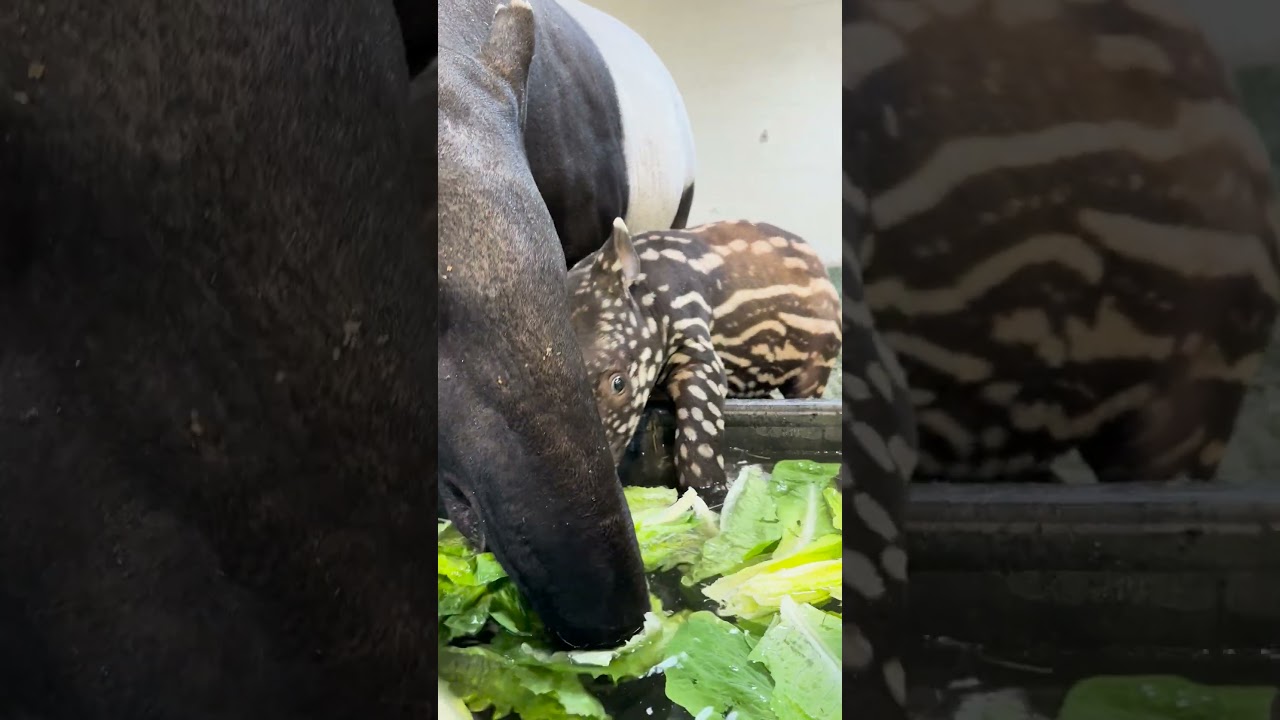- Ume the tapir calf captivates audiences with her playful antics in a water tub, reflecting important aspects of animal behavior in captivity.
- The conservation challenges and efforts surrounding tapirs, highlighting their endangered status and the importance of habitat protection and breeding programs.
- The critical role of zoos in wildlife conservation, focusing on animal welfare, education, and research.
- The significance of video content and digital media in raising awareness for wildlife conservation efforts.
Ume the tapir calf has become a delightful attraction for visitors and viewers alike, thanks to her enthusiastic splashing in a simple water-filled tub. Her playful antics, captured on video, not only entertain but also provide a valuable window into tapir behavior. This activity showcases the natural curiosity and intelligence of tapirs, features that are often underestimated due to their less flamboyant appearance compared to more iconic animals. Observing Ume’s interactions with her environment encourages a deeper understanding of how these animals engage with their surroundings, an essential consideration in ensuring their welfare in captivity.
As Ume captivates audiences with her joyful splashes, her existence serves as a poignant reminder of the endangered status of tapirs. These remarkable creatures face numerous threats in the wild, such as habitat destruction, hunting, and climate change. Tapirs, with their unique ecological role, contribute significantly to biodiversity by dispersing seeds and maintaining forest health. Unfortunately, the dwindling numbers of tapirs in the wild emphasize the urgency of conservation efforts. Breeding programs like those in reputable zoos aim to bolster populations and provide genetic diversity essential for the species’ survival. Such initiatives are vital in offsetting the pressures faced by tapir populations in their natural habitats.
Zoos play an instrumental role in wildlife conservation, extending beyond just the breeding of endangered species. They serve as centers for education and research, providing insights into animal behavior, health, and genetics that can inform conservation strategies. The need for high standards of animal care is paramount, ensuring that animals like Ume lead enriched lives that cater to their physical and psychological needs. Enrichment activities, such as water play, not only stimulate natural behaviors but also contribute to the animals’ overall well-being. By facilitating these experiences, zoos also engage the public, fostering a connection that is essential for garnering support for broader conservation initiatives.
In today’s digital era, video content and social media platforms are pivotal in amplifying conservation messages. The video of Ume the tapir calf gleefully splashing in her tub exemplifies how engaging content can raise awareness about species conservation. Such videos serve multiple purposes: they educate the public about specific animals, highlight conservation needs, and excite support for ongoing and future efforts. A captivating snippet of behavior can inspire emotional connections, prompting individuals to learn more about the pressing issues tapirs and other wildlife face. This ability to reach wide audiences underscores the importance of utilizing digital media in conservation communication strategies.
Overall, the sight of Ume enjoying her time in the water may seem like a simple pleasure, yet it encompasses a complex tapestry of behavior, conservation needs, and educational opportunities. By understanding and engaging with stories like Ume’s, we can contribute to a broader awareness of the natural world’s challenges, championing the protection of endangered species like the tapir. Each play session in that water tub is a step, however small, toward fostering a future where these unique creatures continue to thrive, enriching the diversity and health of our planet’s ecosystems.
*****
Source Description
Pool time, but make it gourmet! Ume, our endangered one-month-old tapir calf, is having the best time splashing around in her tub, especially when it’s topped with crisp romaine for snacking. 🥬 At just a month old, she’s already 95 pounds and growing fast. She’ll continue nursing until about six months of age, but she’s also starting to explore new flavors and textures.


